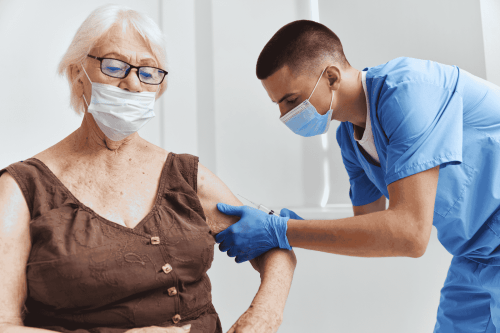While the national conversation about opioid use often centers on addiction and pain management, there’s one area that gets far less attention: the role of neuromonitoring staff in ensuring opioids are used safely during surgical procedures.
According to a study published in JAMA, approximately 80% of surgical patients receive opioids after surgery, with oxycodone and hydrocodone being the most commonly prescribed medications for postoperative pain management. This widespread use highlights the need for all surgical team members—including neuromonitoring professionals—to understand how opioids may impact patient physiology and monitoring data during procedures. If your facility provides intraoperative neuromonitoring (IONM), you know how critical the collaboration between anesthesiologists, surgeons, and neuromonitoring professionals can be. But how prepared is your neuromonitoring team when it comes to recognizing and responding to opioid-related risks in the OR?
Let’s break down why this matters—and what you can do about it.
Why Opioid Awareness Matters in Neuromonitoring

Opioids, such as fentanyl or morphine, are commonly used during surgeries to manage pain and maintain patient stability. But they’re not without risk. These medications can suppress breathing, alter neurological responses, and affect spinal cord function—all of which can impact the accuracy of neuromonitoring data.
When neuromonitoring professionals don’t understand the potential effects of opioids on the central nervous system, the integrity of IONM readings (data collected during Intraoperative Neuromonitoring) can be compromised, leading to misinterpretations or missed warning signs.
The result? Increased patient risk, miscommunication in the OR, and a higher likelihood of adverse outcomes.
The Knowledge Gap Is Real
Many neuromonitoring technologists have high skills in operating equipment, analyzing signals, and communicating with the surgical team. But they may not receive formal training on how opioids interact with the nervous system, how they influence monitoring data, or what red flags to watch for.
In fact, a growing number of healthcare facilities are beginning to recognize that this knowledge gap could create real safety concerns.
Here are a few real-world questions that neuromonitoring staff should be able to answer confidently:
- How do opioids impact motor and sensory evoked potentials?
- What symptoms could indicate opioid-induced respiratory depression in a monitored patient?
- When should a neuromonitoring tech speak up during a procedure involving heavy opioid use?
If your team struggles to answer these questions—or did not receive training yet on how to think about them—you’re not alone. But that’s exactly why this topic deserves your attention.
Risks of Inadequate Opioid Use Training
When neuromonitoring professionals lack proper opioid safety training, your healthcare facility faces several risks:
- Patient Safety
The most critical concern is patient safety. Inaccurate or delayed interpretation of IONM signals due to opioid effects could result in missed signs of neural injury—potentially leading to permanent damage.
- Team Communication Breakdowns
The surgical team depends on the neuromonitoring tech to provide clear, accurate updates during procedures. If a tech doesn’t recognize opioid-related signal changes—or isn’t confident enough to report them—it can create dangerous miscommunication.
- Legal and Compliance Exposure
In the event of an adverse outcome, questions may be raised about staff training and preparedness. Incomplete training records or a lack of opioid safety education could be viewed as negligence.
- Increased Liability for the Facility
Even when protocols are followed, a lack of formal training leaves room for interpretation—and opens the door to potential lawsuits or accreditation issues.
The Solution: Specialized Training in Opioid Use and Safety for Neuromonitoring Staff
The good news? There’s a clear solution—targeted training that connects the dots between neuromonitoring practices and opioid safety.
Our Opioid Use and Safety in Neuromonitoring Training is designed specifically for healthcare professionals in surgical settings, with a focus on those involved in intraoperative neuromonitoring (IONM). This course equips technologists, assistants, and supervising clinicians to:
- Understand the potential risks associated with opioid use during procedures
- Apply safe handling practices in environments where opioids are present
- Recognize the early signs and symptoms of opioid overdose or respiratory depression
This training goes beyond just meeting compliance standards—it empowers your team. When neuromonitoring staff understand how opioids affect patients and monitoring data, they can respond quickly, communicate more effectively with surgical teams, and contribute to safer outcomes.
This training makes it easy for your team to learn at their own pace, without disrupting your schedule.
Benefits for Your Healthcare Team
Investing in opioid safety training for neuromonitoring staff pays off in more ways than one:
- Improved Patient Safety
- Better Surgical Outcomes
- Stronger Team Communication
- Lower Legal Risk
- Enhanced Staff Confidence and Morale
- Improved Accreditation Compliance
In short, it’s a win-win—for your team, your patients, and your bottom line.
Is Your Team Ready?
If you’re unsure whether your neuromonitoring team has received opioid-specific safety training, now is the perfect time to evaluate. Ask yourself:
- Did your techs receive formal training on how opioids influence neuromonitoring data?
- Can they confidently communicate concerns related to opioid use during a procedure?
- Do you have documentation of completed training on this topic?
If the answer is “no” or “not sure,” we can help.
Final Thoughts
Safe opioid use in the operating room isn’t just the responsibility of anesthesiologists. It’s a team effort—and neuromonitoring professionals play a crucial role.
With the right training, your staff can recognize opioid-related changes quickly, speak up when something feels off, and contribute to safer surgical outcomes for every patient.
Don’t leave it to chance. Prepare your neuromonitoring team with training that could make all the difference.
Ensure Compliance. Boost Efficiency. Foster Trust.
Set your team up for success with our Opioid Use and Safety in Neuromonitoring Training—designed to improve patient safety, support regulatory compliance, and strengthen communication in the OR.
Have a large team? Enroll them through our customized, free course development program today and get tailored training that fits your organization’s needs. Click here.



